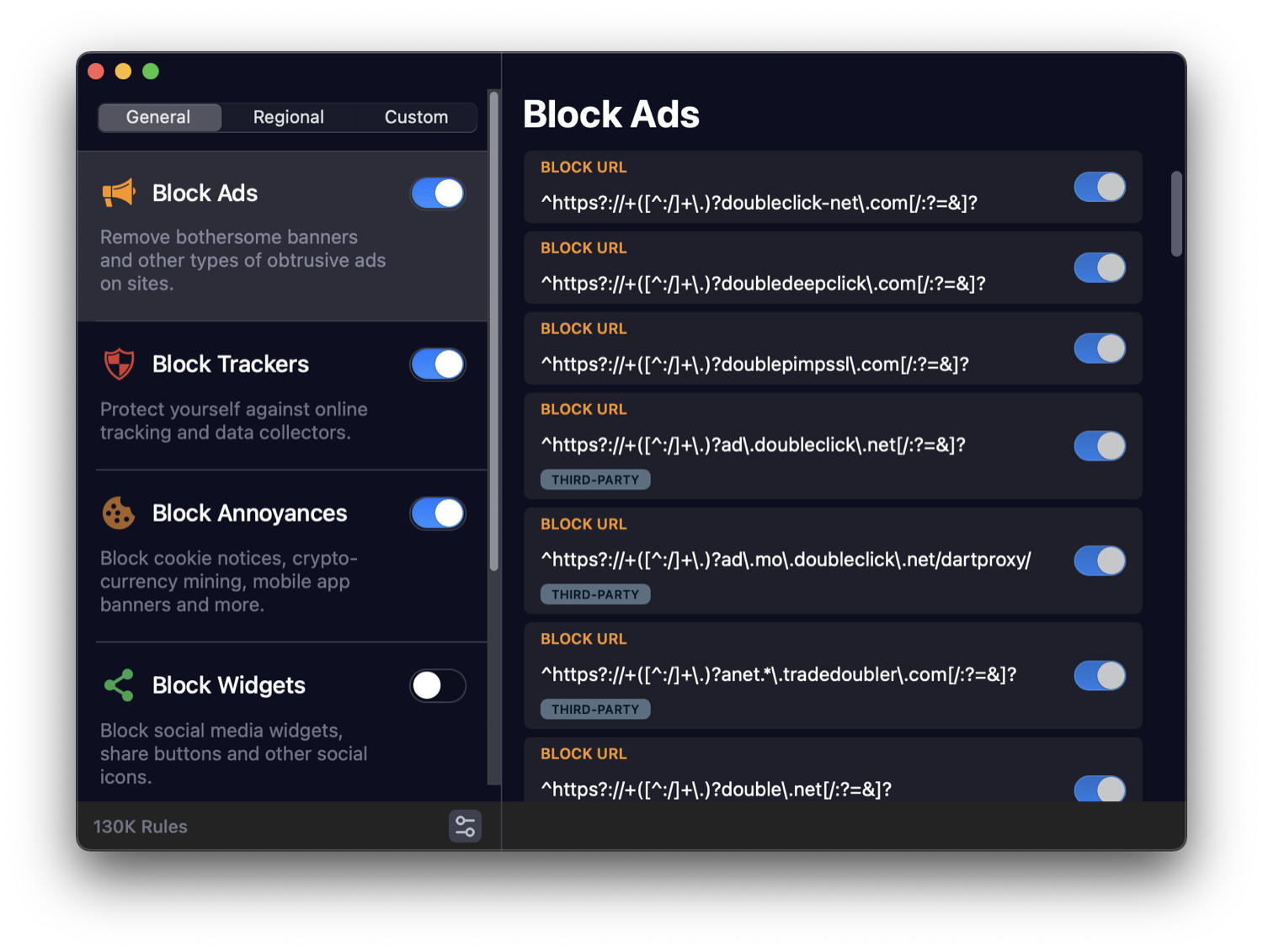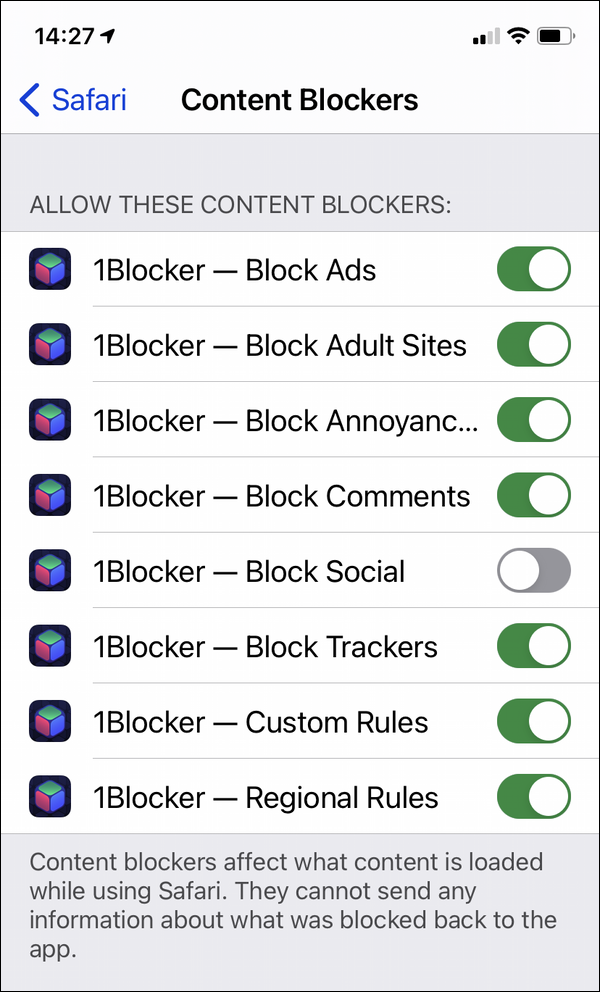Ad-Blockers: The Good, the Bad, the Ethics
Posted on
by
Kirk McElhearn

I think everyone will agree that there are too many ads on the Internet. And since most people ignore ads, online advertising tactics have become increasingly aggressive. They flash, they blink, they auto-play, they pop up, and sometimes ads will block web pages until you dismiss them.
This is, of course, a reaction to the original sin of the Internet: a misguided belief that information wants to be free, and that people wouldn’t pay for online services. Back in the early days, the Internet was new, so free was a way to entice people to use these services. But things are different now, and we’re bombarded with ads.
Like many people, I use ad blockers to ensure that I can surf the web without being overwhelmed. In this article, I’m going to explain how ad blockers work, why you might want to use them — for more than just making it easier to read web pages — how to install them, and I’ll discuss the ethics of using ad blockers.
How ad-blockers work
An ad blocker is a simple tool. It generally integrates with your web browser and uses a set of filters to block specific content. As you can see below, in a screenshot from 1Blocker, each filter is just a text string; for example, to block an entire website, the string looks like this: ^https?://+([^:/]+\.)?domain\.com. (This probably doesn’t look simple if you’re not familiar with this way of creating search strings…)

These filters examine the elements of websites, according to their addresses (URLs), and tell the browser to not load the ones that match their filters. Setting these up manually would be complex for most users, so ad blockers include tens of thousands of such rules and maintain them up-to-date as new ad techniques appear.
Most ad blockers offer a number of categories that you can activate or deactivate, so the extent of your blocking is up to you.
Trackers and ad blockers
A related element used on websites is trackers, and many ad blockers also protect you from them. Trackers send information about you to companies — website publishers, analytics or advertising companies, among others — regarding your behavior, the type of computer or mobile device you’re using, and more, to personalize what you see on websites. This may affect the way a website is laid out, but can also be used to send ads to you because of, for example, the previous website you visited. They slow down your web browsing, and invade your privacy.
Apple’s Safari web browser now includes built-in tracker blocking, a feature the company calls Intelligent Tracking Prevention. You can view a privacy report in Safari, showing how many trackers were blocked, and which websites had the most trackers.
![]()
Pros and cons of ad blockers
Ad blockers are all-or-nothing apps. Those filter rules are draconian; they either block or allow. However, most ad blockers allow you to whitelist websites; those sites you want to support or that have less obtrusive advertising.
In some cases, ad blockers will break legitimate websites. So you may need to whitelist them to be able to access them. My bank’s website won’t load correctly if I have my ad blocker on, so I’ve whitelisted it. I’ve also found that Google Drive and Google Docs won’t load if my ad blocker is active, so I’ve whitelisted them too.
Ad blockers are helpful for a number of reasons. They:
- Remove distracting ads, making pages easier to read
- Make web pages load faster
- Keep advertisers from tracking you across websites
- Reduce bandwidth (especially important with mobile devices)
- Reduce battery usage (again, important for mobile devices)
- Block fake news; there are several companies that "advertise" fake news to attract readers
- Protect you from malware
Ads and malware
Perhaps the last point in the bullet list above may surprise you. How can ads be malware? There is a long history of ad networks compromised by malware. In 2016, a number of major websites, including NYTimes.com, NFL.com and TheHill.com, were hit by ransomware malvertising. And more recently, YouTube ads were used to hijack viewers’ CPUs to perform Bitcoin mining.
While this type of malicious ad is rare, it’s not uncommon. Every now and then, I turn off my ad blocker and visit some websites, and often see ads that are at least scams, and could be even more malicious.
How to use ad blockers on your Mac or iOS device
On the Mac, it’s relatively simple to install an ad blocker or tracker blocker. Content blockers are available for all the major browsers: just download a browser extension, and then install it in your browser. For Safari, you can download content blockers from the Mac App Store, then go to Safari > Preferences > Extensions to configure them.
On iOS, you can download and install an ad blocker — you’ll find plenty on the App Store — and, when you have done so, go to Settings > Safari > Content Blockers and toggle one the one(s) you want to use.

Another way to make reading easier, without installing an ad blocker, is to use Safari’s Reader mode, which can strip most of the distracting content on web pages. I discuss that in this article about customizing Safari. Note that this doesn’t work with all web pages.
Is ad blocking ethical?
In September, 2015, developer Marco Arment released Peace, an ad blocker for iOS. It was one of the first such apps, and it soared to the top of the charts very quickly. Yet Arment decided to withdraw the app from sale and refund users. He said, "Peace required that all ads be treated the same — all-or-nothing enforcement for decisions that aren’t black and white. This approach is too blunt…"
It’s a tough call; you want your favorite websites to survive, yet they hit you with an advertising sledgehammer. As someone who earns a living from writing content for publications, it hurts me to use an ad blocker, but it’s necessary. What really irks me is that websites I subscribe to — newspapers and magazines — often still show me ads. When websites decide to tone down the ads, I’ll whitelist them; but, they should be rewarding me for paying for their content.
Overall, ads are often too intrusive, and sometimes simply dangerous. The more people use ad blockers, the more publishers and advertisers will work to find a better way.
Do you use an ad-blocker on your Mac or iOS device? Which ad-blocker is your favorite? Have something to say about this story? Share your comments below!